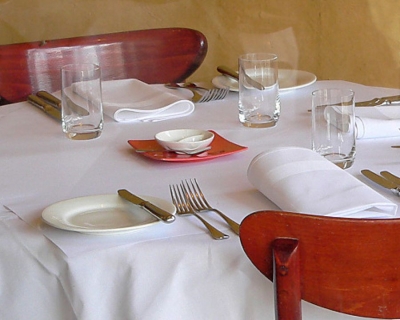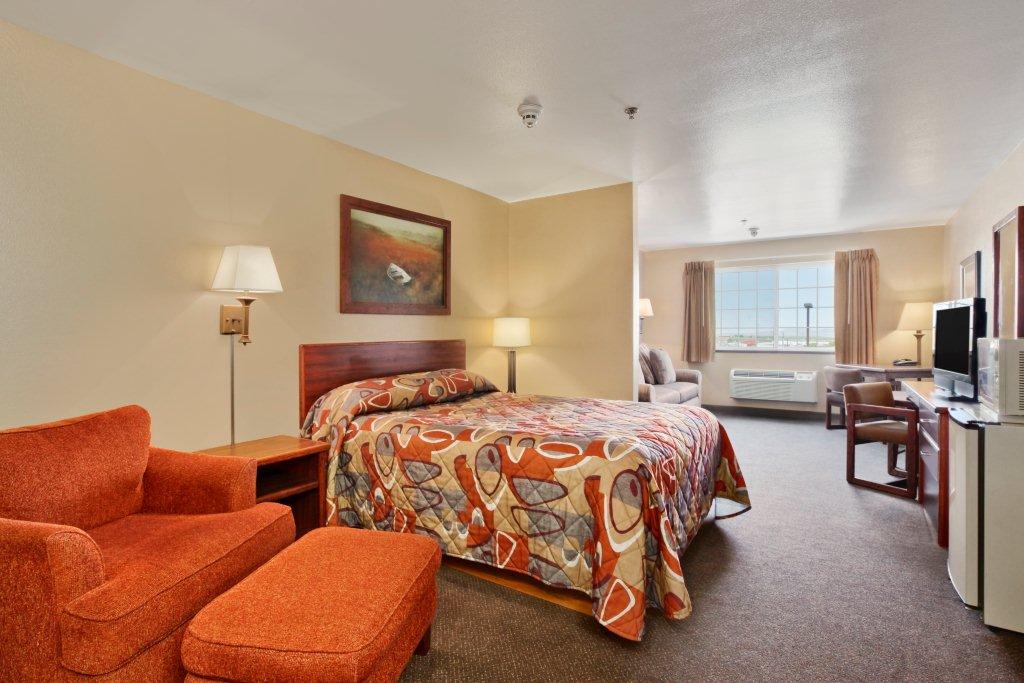Landing Zone
Idaho County Airport is your doorway to the many opportunities our local area provides.
| Places to Eat | Places to Stay | Places to Play |
 |
 |
 |
Visit North Central Idaho
North Central Idaho is your vacation playground! From whitewater rafting to big game hunting and mountain biking, you’ll find outdoor wilderness adventures waiting around every turn of our river bends, forest trails and scenic drives. In between, we offer the comforts of wine tasting rooms, golf courses and art galleries. Through it all, the stories of a region shaped by powerful natural and cultural forces is shared at landmarks, historic sites and museums. North Central Idaho. It’s more than you think and you could be here…
Grangeville
www.grangeville.us
Grangeville enjoys close access to scenic and wildlife areas. Whitewater rafting is a popular pursuit and the Clearwater River, Snake River, and Salmon River lie close by.
Salmon and steelhead fishing is often a choice of recreation. Many residents of Grangeville hunt deer, elk, and turkeys in the nearby forests. Hiking is also popular in the Nez Perce National Forest, the Gospel Hump Wilderness, and Hells Canyon to the south of the city. The city operates the nearby Snowhaven ski area for winter recreation.
Many residents of Grangeville depend on the nearby forests for their livelihoods. In addition to timber harvesting, the U.S. Forest Service is a major source of employment in the region.
Grangeville’s “Border Days” is a large public celebration on the weekend of July 4 (Independence Day), which features the state’s oldest rodeo as well as parades, art shows, and the world’s largest egg toss.
Cottonwood
www.cottonwoodidaho.org
Cottonwood began in 1862 as a series of way station shelters for prospectors and mining suppliers on their way south to Florence and Warrens. It was named for the dense growth of trees that formerly lined Cottonwood Creek.
St Gertrude’s
West of the city is the Monastery of St. Gertrude, begun in the early 1900s and completed in 1924, with a brick addition in 1949. The community of Benedictine sisters traces their history to twelfth-century Switzerland. The chapel at St. Gertrude’s is among the most ornate in the state and is on the National Register of Historic Places. The sisters ran St. Gertrude’s Academy, a co-ed Catholic high school, until May 1970.
Cottonwood Butte
The Cottonwood Butte ski area is also west of the city, on the east face of the mountain of the same name. During the Cold War, the mountain was the site of Cottonwood Air Force Station, an early warning radar installation of the U.S. Air Force. Construction of the station began in 1956 and it went operational in early 1959. The radar tower was at the summit and the cantonment of the station was at 4,400 feet (1,300 m), about a mile (1.6 km) below the present base of the ski area on Radar Road. The 27-unit family housing area was built in the city of Cottonwood, on Butte Drive in the north end. The radar was significantly upgraded with a new tower in 1962, but the station was obsolete within three years and was deactivated. The cantonment buildings became a Job Corps center in 1965, supervised by the U.S. Forest Service. It was transferred to the state of Idaho in 1974, and was converted to the minimum-security North Idaho Correctional Institution (NICI)
Elk City, Dixie, Red River
The communities of Elk City, Dixie, and Red River are well known for their wonderful summer weather and winter recreation. Trout fishing, ATV riding, camping, hiking, are popular activities. Old lookout towers and ridge-top gravel roads provide beautiful views. In winter, miles and miles of groomed trails are available for snowmobiling and cross-country skiing.
Red River is a popular hot spot year round. Red River Hot Springs is a small resort at the end of the road that has many options for recreation.
Dixie is an unincorporated community in Idaho County, Idaho, United States, located 43 miles (69 km) east-northeast of Riggins. Dixie was an important gateway to the Thunder Mountain Mines of Idaho during the early 1900s when Dixie was on the northern terminus of the Three Blaze Trail.
The town was one of the earliest mining camps in Idaho, founded in 1862. A Forest Service sign in town relates a short history of the town:
Dixie was founded on August 24, 1862, by two miners who trekked over the divide from Elk City and discovered gold in Dixie Gulch. Supposedly, Dixie was named in honor of Dixie, Georgia, one of the first miner’s hometowns.
In 1900, Dixie was a boomtown. During World War One, Dixie was almost deserted as residents joined the service. By the Depression, people were moving back to eke out a living by mining a little gold. Increases in gold prices from 1932 to 1937 prompted the restaking of many properties and prospecting for new lodes.
The 1900 boom was related to the discovery of gold at Thunder Mountain. Dixie was a deep-wilderness outpost that was well-situated as a supply center for the Thunder Mountain rush.
Today Dixie is an extremely remote town that is still active with retirees, vacation cabins, and an active lodge catering to hunters and backcountry explorers. The town sits on the Gold Rush Loop Tour, along with Elk City and other local mining camps.
Kamiah
www.kamiahchamber.com
The Kamiah area has been inhabited by the Nez Perce for centuries.[6][7] The name “Kamiah” is Nez Perce for “many rope litters,” as Nez Perce manufactured “Kamia” ropes in the area to fish steelhead. Also according to Nez Perce tradition, the Appaloosa horse was first bred in the area.
On their return trip east, the Lewis and Clark Expedition camped in the Kamiah area for several weeks during the spring of 1806, waiting for snows to melt.
Hohots Ilppilp was the leader around Kamiah from at least the time of Lewis and Clark until the 1840s. When the first leader for all the Nez Perce was appoint it was Hohots Ilppilp’s grandson Ellis who lived in this area and maintained large herds of sheep, cattle and over a thousand horses.
Kamiah is within the Nez Perce Indian Reservation. Similar to the opening of lands in Oklahoma, the U.S. government opened the reservation for white settlement in November 1895. The proclamation had been signed less than two weeks earlier by President Cleveland.
Kooskia
www.kooskia.com
The name of the town is likely a contraction of the Nez Perce word “koos-koos-kia” which refers to the Clearwater River. The town was first named Stuart, after James Stuart (1863–1929), a Nez Perce surveyor and merchant. The railroad arrived in 1899 and named its station “Kooskia,” because there already was a railroad station named “Stuart” in the state. The town went by both names for the next decade until it was formally renamed in 1909.
Starting in 1903, Kooskia was the terminus of an aerial tramway up to the elevated Camas Prairie. It carried up to 190,000 lb (86,000 kg) of grain per day in its thirty buckets and warehouse facilities were present at both ends of the cable line, with a combined capacity of 100,000 bushels. Following the completion of the Camas Prairie Railroad’s second subdivision to Grangeville in 1909, the tramway gradually lost patronage and was discontinued in 1939. It climbed west-southwest toward Lowe (later Winona); some older maps listed Kooskia as “Tramway.” It experienced a significant accident in 1907 due to cable failure, fortunately without fatalities.
Riggins
www.rigginsidaho.com
Riggins is a city in Idaho County, Idaho, United States. It is nestled deep in a canyon at the confluence of the Salmon River and the Little Salmon River in west central Idaho, approximately 150 highway miles (240 km) north of Boise, and 120 highway miles (190 km) south-southeast of Lewiston. The elevation of Riggins is 1,821 feet (555 m) above sea level, and the population was 419 at the 2010 census. US-95, the only highway for the state connecting the Panhandle to the south, runs through Riggins as Main Street. Along this route, Riggins is the northwestern most town in the Mountain time zone. The Pacific time zone begins just north of Riggins, upon crossing the Salmon River.
Whitebird
www.visitwhitebird.com
At the southwest corner of the Camas Prairie, White Bird is near the Salmon River crossing point for the Lewis and Clark expedition. It is also the location of the 1877 Battle of White Bird Canyon, which was the first fight of the Nez Perce War and a significant defeat of the U.S. Army. Chief White Bird was a leader of the tribe. The summit of White Bird Hill is 2700 feet (823 m) above the city, ascended via U.S. Highway 95.
White Bird was established in 1891, and was named for a Nez Perce chief.